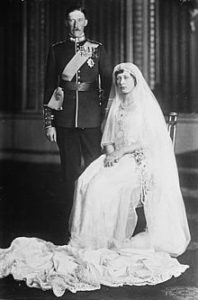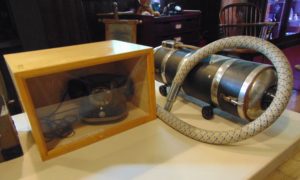*Update: please see the Harewood House category for other posts about this project.*

As a follow-on project from ‘Electrifying the Country House‘, I‘m pleased to confirm that we have been awarded a small grant to work with nearby Harewood House researching the history of electricity at the property and working on new impact and engagement outputs. Over the course of this new three month project (‘Harewood’s Electricity Story’), which runs from now until September, I will work with Harewood staff to explore their archives and collections in order to better understand how electric lighting and other electrical technologies and systems were introduced into the house. Harewood House was first electrified in 1901 by the 5th Earl of Harewood, and this installation was subsequently expanded and modernised by the 6th Earl and his wife Princess Mary, the Princess Royal, in the 1930s after they moved into the House.
Whilst the early period of electrification is interesting – for instance it is suspected but not known for certain that the original installation on the property employed hydroelectricity – the project will focus primarily on the 1930s. This was a time when many domestic electrical appliances we now take for granted were becoming more common in households around the country as more people had an electricity supply: items such as vacuum cleaners, fridges, hair dryers, irons and kettles. Household management books from the period, such as the popular ‘Mrs Beeton‘s‘ range, were explaining how to cook using electric ovens, and how best to use other electrical cooking utensils. In an attempt, which began in the mid-1920s, to improve, expand, and standardise the supply of electricity across the country, the national grid was established and came online towards the end of the 30s.

This research will then inform several outputs: we will use it to reinterpret Harewood‘s below stairs lighting cabinet, which comprises a large collection of objects representative of different eras of lighting technology. A new interpretative panel and object labels will tell the story of electric lighting more comprehensively than is possible at present. We will also run a series of three educational workshops for Key Stage 2 children with Theatre and Performance graduates from the University. These will comprise a short performance about the history of electricity at Harewood, an opportunity for the audience to talk to the characters and ask them questions, museum object handling, and a crafts activity: making cup and string telephones.
The funding for the project comes from The Culture Capital Exchange, a new joint initiative of Arts Council England and the Higher Education Funding Council for England which provides seed funding grants up to £5000 for collaborative research projects between academics, specifically Early Career Researchers, and creative small-medium enterprises or individuals, including artists, performers and heritage organisations. This is the first time this initiative has run, and ours is one of the first tranche of awards. If you‘re interested in applying for this scheme, read through the FAQs on their website, and feel free to get in touch with us if you have any questions about our experiences!